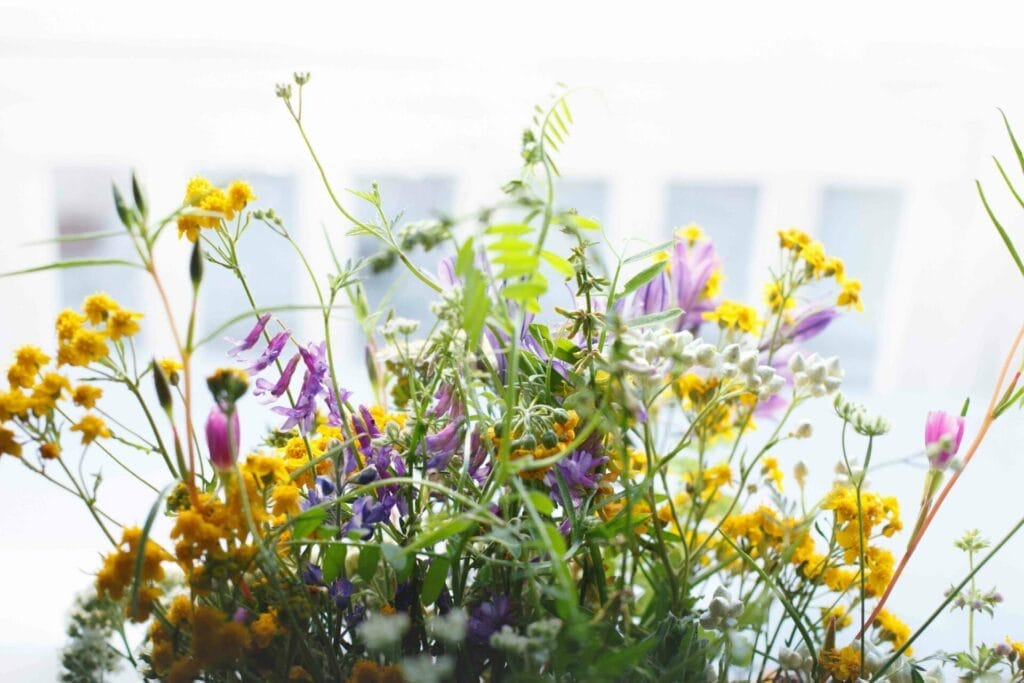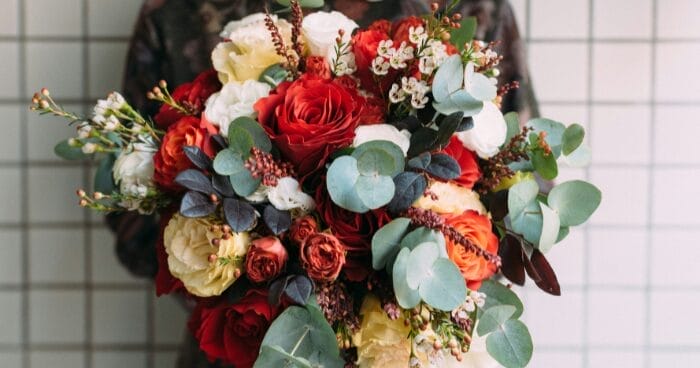Words by Clara Strunck
Once deemed second-best to their real-life counterparts, artificial blooms have had a stylish makeover
Whether it’s a fir garland twisted around a stair banister, sprigs of holly laid across a mantlepiece or seasonal flowers festooning a table, nothing dresses a space for Christmas quite like beautifully arranged blooms. But at more than a few festive parties this year, you’re likely to be admiring buds with a difference: fashionable foliage has gone faux.
It has taken artificial flowers years to throw off the less-than-luxury associations that ‘fake’ often denotes – in other words, budget-friendly, bad quality and just a little bit naff. But these days, faux flowers are everything but, thanks to new, high-fashion makers and elevated craftsmanship. “I just couldn’t find any faux flowers that weren’t either super expensive, or didn’t look really cheap,” says Elle King, the co-founder of ‘forever flowers’ brand Ett Hem London. She and her business partner, Sarah Radovich, saw a gap in the market emerge during the pandemic. “We spent years gifting fresh flowers to our friends and receiving them, too. And we got really sick of receiving bad quality, even dead blooms.”
King, who also works as a designer for John Lewis on their Anyday range, and Radovich, who owns an agency that launches brands into the European market, were able to combine their skills to create a company that “repositioned faux flowers in a modern, design-led manner,” King says. Ett Hem London, which launched fully earlier this year, has several unique selling points: the quality is “the highest we could possibly find, from reputable suppliers” and the founders create bespoke arrangements that are hand-tied in London, and delivered wrapped just as fresh flowers would be. “It’s accessible luxury, but faux, and that’s not been done before,” says King.
And they aren’t the only ones realising the potential – and increasing popularity – of artificial stems. “We’ve seen a lift in sales year-on-year, particularly around Christmas, when our range of faux foliage really comes into its own,” says Sue Jones, co-founder and creative director of the high-end interiors brand Oka. “I personally love using our garlands and wreaths to decorate my home. Not only do they look extremely realistic, but they stay fresh all season long and have the added benefit of being reusable for many years to come.”
Designer Abigail Ahern, meanwhile, prefers to use “trailing pine branches and eucalyptus stems” from her own range, and tells me that each collection of her faux flowers “seems to gather even more popularity. Faux botanicals are a real investment and, with the right care, these stalwarts will last for a long time. If, like me, you love to reflect the season, just change them up, pop them away and then bring them back out again when the time is right.”

The price of cut flowers has sky-rocketed thanks to inflation and higher labour costs; additionally, blooms are becoming less accessible thanks to rising temperatures, meaning flowers are air-freighted all over the world – at a massive financial and environmental cost. It’s time, therefore, for a shift in perspective when it comes to how we see real versus faux flowers – in terms of both sustainability and quality.
“Plastic is a dirty word, but we’re trying to change people’s perceptions on that,” says King. “We say that our flowers last forever, and we do a buyback scheme. We also support Plastic Bank, a collection service that stops single-use plastics ending up in the ocean. It’s really about educating the customer: plastic isn’t a bad material, we just shouldn’t be throwing it away.”
“Plastic is a dirty word, but we’re trying to change people’s perceptions”
It’s no wonder the services of Ett Hem London have already been snapped up by the Royal Opera House and the Royal Palaces (King Charles is, of course, famously sustainably minded). “We must have done hours and hours of proposals, because it really did have to be right,” recalls King of the brand’s first meetings with the Royal Opera House. “I gave samples to them, and those samples got into the hands of Buckingham Palace. They were really impressed, and kind of jumped on the bandwagon. From a sustainability and cost perspective, they thought it was really important. It’s been an amazing experience.”
Ett Hem London has supplied the Royal Opera House with a year’s worth of faux blooms, with King and Radovich conducting “seasonal changes, going in every quarter and refreshing what’s on display, according to what’s relevant to the ballet”. When flowers aren’t in use, they’re stored in the Royal Opera House’s extensive archive underneath Covent Garden. They’re doing the same for Kensington Palace and Buckingham Palace, and “a lot of businesses reach out for a subscription service,” says King.
All faux flowers, however, are not created equal. How do King and Radovich recommend starting to curate a good selection for yourself? “Fashion absolutely sits with interiors and they’re really interlinked,” says King. “It’s really about having that accessory for your home, as you would an accessory for your outfit.” If your style is minimal, you might be drawn to sculptural anthuriums; if you lean towards a more-is-more aesthetic, pom-pom dahlias and lashings of eucalyptus stems might suit you better.
One trick from Chrissie Rucker, founder of The White Company, is to mix real blooms with fake ones. “If I’m time-poor, a mix can be a real time-saver,” she says. “When planning larger events, I start with my fake displays and add any real flowers and greenery on the day.”
King and Radovich also work with a fresh-flower florist to help with styling. “I actually think there’s something beautiful about mixing the real with the faux,” says King. “There are specific flowers we don’t have and you can just go to the flower market, mix the two together and create a really incredible look.” Just be sure to remember which is which – because when the fakes are this good, you’ll be hard-pressed to tell the difference.




